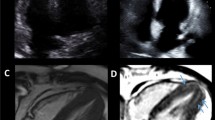Abstract
Free radicals have been implicated in myocardial reperfusion injury. Hydrogen peroxide (H2O2) is a precursor of highly reactive oxygen intermediates. In this study, we investigated myocardial injury caused by endogenous H2O2 during the early reperfusion period following brief ischemia with electron microscopy and the cerium method. This method involves formation of an electrondense precipitate when H2O2 reacts with cerium chloride (CeCl3). We used isolated, functioning hearts prepared according to the working heart model, which were reperfused with a solution containing 0.5mM CeCl3 for 5 min after 10 min of ischemia. Some hearts were treated with 3-amino-1,2,4-triazole (ATZ) to inhibit catalase; others were treated with ATZ and superoxide dismutase (SOD), which dismutates the superoxide anion to hydrogen peroxide. In the control group (no drugs given) and the ATZ-treated group, the CeCl3−H2O2-dependent reaction products during the reperfusion period appeared in 12% and 28%, respectively, of the microvascular spaces. Treatment with SOD did not produce a decrease in electron-dense precipitates or a decrease in myocardial injury during ischemia-reperfusion. Moreover, in the ATZ group, moderately injured myocytes were seen (swelling of mitocondria, intermyofibrillar edema). Our results indicate that in myocytes, catalase plays an important role in the defense against H2O2 and that the increase in H2O2 is a cause of reperfusion injury. However, SOD does not protect against H2O2 in the absence of catalase.
Similar content being viewed by others
References
Zweier JL, Kuppusamy P, Lutty GA (1988) Measurement of endothelial cell free radical generation: evidence for a central mechanism of free radical injury in postischemic tissues. Proc Natl Acad Sci USA 85:4046–4050
Baker JE, Felix CC, Olinger GN, Kalyanaraman B (1988) Myocardial ischemia and reperfusion: direct evidence for free radical generation by electron spin resonance spectroscopy. Proc Natl Acad Sci USA 85:2786–2789
Boveris A, Oshino N, Chance B (1972) The cellular production of H2O2. Biochem J 128:617–630
Ganschow RE, Schimke RT (1967) Independent genetic control of the catalytic activity and rate of degradation of catalase in mice. J Biol Chem 244:4649–4658
Neely JR, Liebermeister H, Battersby EJ, Morgan HE (1967) Effect of pressure development on oxygen consumption by isolated rat heart. Am J Physiol 212:804–814
Shlafer M, Brosamer K, Forder JR, Simon RH, Ward PA, Grum CM (1990) Cerium chloride as a histochemical marker of hydrogen peroxide in reperfused ischemic hearts. J Mol Cell Cardiol 22:83–97
Virmani R, Forman MB, Kolodgie FD (1990) Myocardial reperfusion injury, histopathological effects of perfluorochemical. Circulation 81 (suppl IV): 57–68
Jennings RB, Ganat CE (1974) Structural changes in myocardium during acute ischemia. Circ Res 34/35 (suppl III):III-156–III-168
Ozawa K, Takeyama Y, Katagiri T (1982) Electron microscopic studies on the ATPase activity in myocardial infarction. Jpn Circ J 46:725–733
Nakatani M, Ishioka H, Koba S, Ueda R, Suzuki H, Arata H, Kitsu T, Geshi E, Katagiri T (1997) Ultrastructural and biochemical studies of ischemic preconditioning using an adenosine receptor blocker and an ATP-sensitive K channel opener. Med Electron Microsc 30:63–69
Bruijin WC, Schellens JPM, Buitenen JMH, Meulen J (1980) X-ray microanalysis of colloidal-gold-labelled lysosomes in rat liver sinusoidal cells after incubation for acid phosphatase activity. Histochemistry 66:137–148
Briggs RT, Drath DB, Karnovsky MI, Karnovsky MJ (1975) Localization of NADH oxidase on the surface of human polymorphonuclear leukocytes by a new cytochemical method. J Cell Biol 67:566–586
Enger RL, Darlgren MD, Morris DD, Peterson MA, Schnid SGW (1986) Role of leukocytes in response to acute myocardial ischemia and flow in dogs. Am J Physiol 251:H314-H322
Jarasch ED, Bruder G, Heid HW (1986) Significance of xanthine oxidase in capillary endothelial cells. Acta Physiol Scand 58:39–46
Kim T, Kuzuya T, Hoshida S, Nishida M, Fuji H, Tada M (1989) Reoxygenation-induced endothelial cell injury provoked adhesion and diapedesis of neutrophils via arachidonate lipoxygenase metabolism. Circulation 80(4):II-400
Chamber DE, Park DA, Patterson G (1985) Xanthine oxidase as a source of free radical damage in myocardial ischemia. J Mol Cell Cardiol 17:145–152
Freeman BA (1984) Biological sites and mechanism of free radical production. In: Armstrong D (ed) Aging and disease. Raven Press, New York, pp 43–53
Goldstein S, Czapski G (1986) The role and mechanism of metal ions and their complexes in enhancing damage in biological systems or protecting these systems from the toxicity of O2. Free Radical Biol Med 2:3–11
Imlay JA, Linn S (1988) DNA damage and oxyen radical toxicity. Science 240:1302–1309
Shlafer M, Myers CL, Adkins S (1987) Mitochondrial hydrogen peroxide generation and activities of glutathione peroxidase and superoxide dismutase following global ischemia. J Mol Cell Cardiol 19:1195–1206
Nohl H, Jordan W (1980) The metabolic fate of mitochondrial hydrogen peroxide. Eur J Biochem 111:203–210
Iwata T, Konno N, Yanagishita T, Katagiri T (1993) Role of catalase in ischemia-reperfusion injury in the perfused rat heart. Showa Univ J Med Sci 5(2):225–235
Jeroudi MO, Triana FJ, Patel BS, Bolli R (1990) Effect of superoxide dismutase and catalase, given separately, on myocardial stunning. Am J Physiol 259:H889-H901
Ambrosio G, Weisfeldt ML, Jacobus WE, Flaherty JT (1987) Evidence for reversible oxygen radical-mediated component of reperfusion injury: reduction by recombinant human superoxide dismutase administered at the time of reflow. Circulation 75:282–291
Bolli R (1991) Oxygen-derived free radicals and myocardial reperfusion injury: an overview. Cardiovasc Drugs Ther 5:249–268
Coudray C, Boucher F, Pucheu S De-Leiris J, Favier A (1995) Relationship between severity of ischemia and oxidant scavenger enzyme activities in the isolated rat heart. Int J Biochem Cell Biol 27:61–69
Downey JM, Omar B, Ooiwa H, McCord J (1991) Superoxide dismutase therapy for myocardial ischemia. Free Radical Res Commun 2:703–720
Kirshenbaum LA, Singal PK (1993) Increase in endogenous antioxidant enzymes protects hearts against reperfusion injury. Am J Physiol 265:H484-H493
Author information
Authors and Affiliations
Rights and permissions
About this article
Cite this article
Ueda, R., Iwata, T., Konno, N. et al. Histochemical studies of myocardial injury caused by hydrogen peroxide after reperfusion using the cerium method. Med Electron Microsc 31, 77–84 (1998). https://doi.org/10.1007/BF01557784
Received:
Accepted:
Issue Date:
DOI: https://doi.org/10.1007/BF01557784




